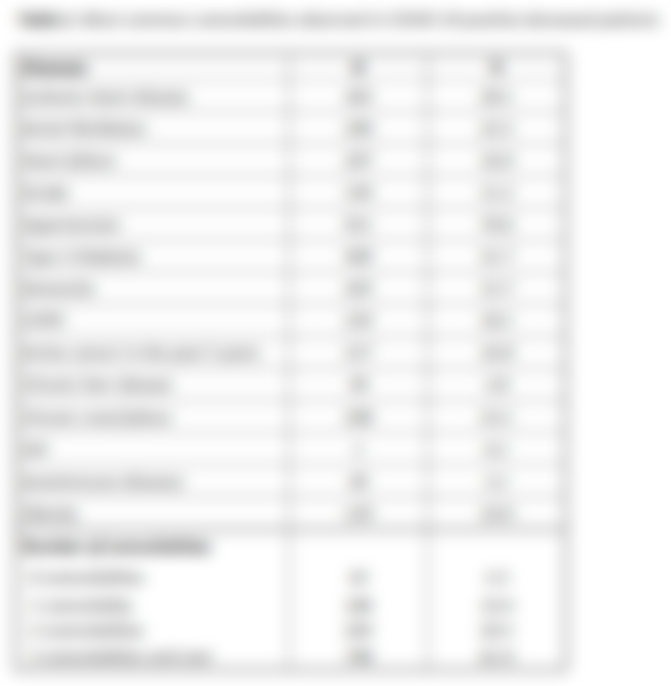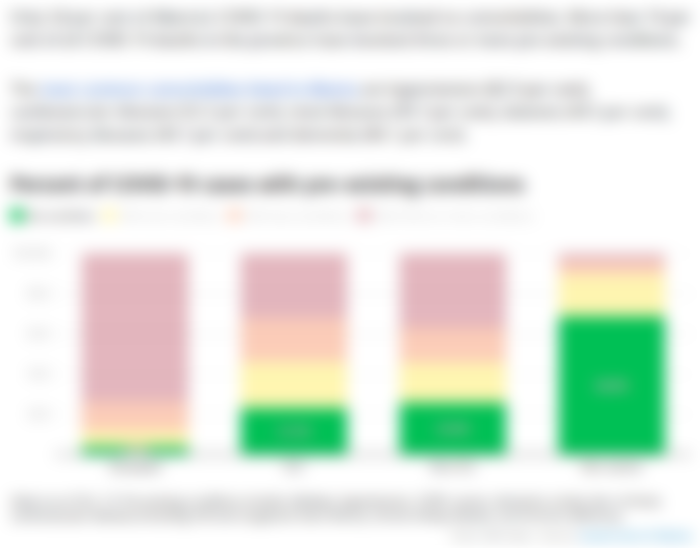Not medical, legal, or any other advice - reported for information only.
There is a peculiar data point about COVID-19: the average age of fatalities from (or with) the disease. The average age of "COVID deaths" is above 80 years in most Western countries, and thereby higher (older) than the average age at death from all causes in those same countries. For example, as per Global News on 2 June 2021, the average age of Canada's COVID deaths (in 2020) was 83.8 years, while the average age at death (in 2019) was only 76.5 years. In other words, a typical COVID fatality was more than seven years older than the average person passing away in the preceding year. In the US, the median age of deaths "involving COVID-19", as the CDC put it, was 78 years (according to a data table on the SWPRS site as of September 2021), while the 2019 average age at death was a meagre 73.8 years, according to USAFacts. So, in the US, COVID hit the typical victim four years later than their average peer's age at death.

You have probably already noticed that I used the uncommon phrase average age at death (or "average age of death"). What's up with that? Age at death is a hard fact about those who pass away during a defined period such as one calendar year. Life expectancy however is more commonly discussed but represents a different concept. Often, as in the case of the USAFacts site shown above, it's an estimate for the expected length of life for newborns at that point in time. In the US, this estimate was 77.3 years, thus significantly older than the current average age of death. Comparing the age of deaths involving COVID with the average age at death, not with life expectancy, seems appropriate since both are hard observational data that concern current mortality, in contrast to life expectancy, which is a calculated projection.
It's always interesting to read online fact checks for certain claims, although many of them (the fact checks!) are misleading when you look closely. In this context, I noticed a post titled "Average Covid-19 victim dies years before they otherwise would" by Full Fact from 20 July 2021. Apparently, a meme on social media put the words "get COVID and live longer" in UK Prime Minister Boris Johnson's mouth and Full Fact saw the need to correct this claim (although it looks more like a creepy joke to me). The fact check points out that the life expectancy of people who have already reached a certain age is higher than the life expectancy at birth or during earlier years, when the possibility of dying young is included in the estimate. The fact check concludes with the verdict that "People dying from Covid-19 lose about a decade of life on average". In the text, the only reference in this regards is to the Office of National Statistics' life tables estimating a remaining life time of around seven, not ten, years at the age of death from/with COVID.

But Full Fact's claim of a significant remaining life time, which turns the checked "fact" upside down, seems questionable and disingenuous. It is well-known since the beginning of the pandemic that those dying in conjunction with COVID almost always were of poor health. As early as 6 April 2020, the epidemiological centre of the Italian Institutes of Health reported that only 3.3% of COVID deaths in hospitals had no comorbidities, while 61.9% had three or more comorbidities. These conditions included many of the worst scourges of humanity such as chronic cardio-vascular and respiratory illness, diabetes, obesity, and dementia, to name a few.
Similarly, the Centers for Disease Control and Prevention reported on 12 June 2020 that only 6% of deaths in the US "COVID-19 was the only cause mentioned". Thus, 94% of American COVID death certificates included one or more other "health conditions or contributing factors". As fact-checkers will be quick to point out, it is possible that COVID caused many of the other conditions. Nevertheless, the 152-page CDC list includes other viral and bacterial diseases and many chronic conditions like cancer, dementia, and diabetes that have not been linked to the novel coronavirus. To this layperson, it seems clear that many of these patients were moribund and SARS-CoV-2 was one of several possible triggers of death. Or it may have been an incidental finding.
Up north, our statistical agency presented "COVID-19 death comorbidities in Canada" on 16 November 2020, covering data from March-July 2020. Their insights are again very similar, pegging the rate of one or more comorbidities at 90%. Two quotes stand out:
The introductory sentence, "There is now clear evidence that people with pre-existing chronic conditions or compromised immune systems are at higher risk of dying of COVID-19..."
A "point of comparison" that was long inadmissible to the mainstream, "the most common influenza comorbidities recorded between 2016 and 2018 were similar to those recorded for COVID-19 during the first wave"
Most recently, a 15 October 2021 news report on comorbidities of COVID deaths in the Canadian province of Alberta clearly outlined the major role of comorbidities in severe and fatal COVID - the following screenshot speaks for itself.

If the virus affects primarily frail elderly and otherwise vulnerable people, in how far can we sustain the notion of being in a serious pandemic? I have written elsewhere about how the World Health Organization changed the definition of "pandemic" (in the context of the flu). Colloquially, we would still expect "enormous numbers of deaths and illness" as per the old definition. The global number of "COVID deaths" is approaching 5 million (for a 20-month) period. The Worldometers site provides these basic coronavirus statistics but it also includes general demographic stats and counters. The count-up counter for deaths in the current calendar year is trending towards 50 milion at present. We need to view the impact of COVID in the context of ongoing human suffering and the finite nature of our lives on this planet.
Perhaps more importantly yet, the COVID statistics are not reliable and inconsistent, as we have already seen above. It is quite possible that the fatalities are over-counted by a factor up to 20 (= 95%) if we consider the impact of comorbidities. The hard data to test the fatal outcome is all-cause mortality. Statistics on all-cause mortality are quite delayed in most countries, but the 2020 data have now been published. For Canada, independent researchers Drs. Denis G. Rancourt, Marine Baudin, and Jérémie Mercier present an "Analysis of all-cause mortality by week in Canada 2010-2021, by province, age and sex" and conclude: "There was no COVID-19 pandemic, and there is strong evidence of response-caused deaths in the most elderly and in young males." The article is not peer-reviewed and the analysis is based on an examination of the seasonal patterns (cycles) of all-cause mortality for the last ten years. I am very familiar with the value of visual analysis (in my case based on statistical maps rather than graphs) but I know that reviewers often criticize the lack of statistical testing to verify my findings. The strength of visual analysis is in the discovery of unusual patterns in data that merit further examination.
With this limitation out of the way, Rancourt and colleagues note that the "COVID peak" in March 2020 all-cause mortality is a never-before seen pattern that cannot be explained by the normal infectious disease epidemiology. It can only be explained by the radical changes in health care and long-term care procedures and practices. Essentially, the WHO's declaration of a pandemic triggered measures that killed frail elderly residents living in institutional settings due to the changes or disruption of care!

In addition, Rancourt et al. found a suspicious pattern of increased deaths among young male Canadians in the summer of 2020 in most provinces with the exception of Quebec. I was quite interested in this finding and replicated the analysis in part. My graph shows weekly all-cause mortality of under 45 year-olds at the national level. The y axis on the left hand is for males (blue line) while the right axis is for the lower female counts (orange line). I aligned the axes so that the values would overlap at the beginning, representing around 150 deaths/week in young men compared to 100 in young women for the year 2014. Over time, male mortality seems to increase while female mortality stays almost unchanged. And indeed, from April-October 2020, there is a marked increase in male deaths with hardly an uptick in the female curve. There are deviations over multiple weeks in the summers of 2017 and 2019 too, albeit much less pronounced than during the pandemic summer of 2020. Rancourt and colleagues suggest collateral damage from the public health response as a hypothesis, which would have to be tested using other scientific methods.
To summarize, we don't yet know enough about the novel coronavirus and the COVID data circus, as someone has called it, doesn't help. More importantly, our political and public health leaders don't seem to know that they know nothing, as opposed to certain Ancient Greek philosophers. Following the Socratic method, we should be asking more questions to stimulate open debate and find more holistic solutions to the crisis.




Health is wealth indeed